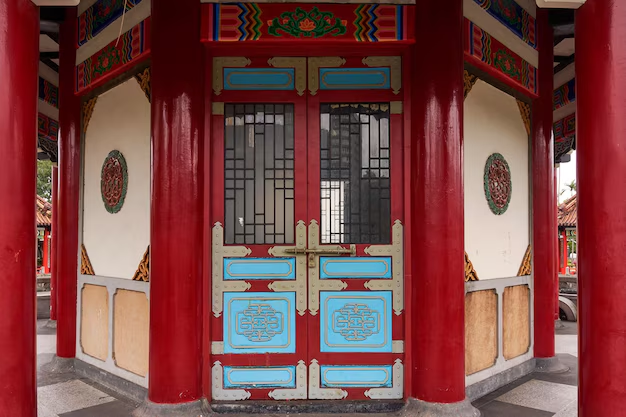Every door holds a secret, every window frames a dream. In China, doors and windows are more than architectural necessities — they are whispers of culture, carved in wood, forged in steel, and kissed by centuries of tradition. They do not merely open or close; they breathe, they guard, they invite, they reveal. To walk through a Chinese door or gaze through a lattice window is to step into a world where function marries poetry, and utility dances with symbolism.
The Historical Roots of Chinese Doors and Windows
Symbolism in Ancient Architecture
In ancient China, architecture was never silent. Every carving on a door, every curve of a window lattice carried a meaning. A door was not just an entryway — it was a statement of fortune, authority, and family heritage. Windows, too, were seen as the eyes of a home, offering both protection and connection with the outside world.
Feng Shui and the Power of Openings
Doors and windows were central in Feng Shui — the sacred science of harmony. A wrongly placed door could block prosperity; a poorly designed window could let happiness slip away. Openings were energy portals, channels through which life flowed like a river.
Imperial Palaces and Humble Homes
From the Forbidden City to the countryside cottages, Chinese doors and windows reflected both grandeur and simplicity. Golden doors guarded emperors while modest wooden frames welcomed farmers, yet both embodied the same cultural heartbeat.
The Artistry of Traditional Chinese Doors
Carved Wooden Doors as Storytellers
Chinese craftsmen carved stories into wood. A door was never plain; it bore tales of dragons fighting storms, phoenixes rising from ashes, and peonies blooming in eternal spring. Each carving was a prayer, a wish for blessings to step inside with every visitor.
Dragons, Phoenixes, and Mythical Patterns
The dragon symbolized strength, the phoenix hope, the lotus purity. These images were etched into doors not just for beauty but to breathe meaning into daily lives.
Calligraphy and Poetic Panels
Many doors bore poetic inscriptions — words of wisdom, blessings for peace, or hopes of prosperity. They were more than symbols; they were daily reminders of values passed from ancestors.
Colors of Fortune and Harmony
Red doors invited good luck, while golden knockers symbolized wealth. The hues chosen were not aesthetic accidents but spiritual choices, painting fortune across thresholds.
Windows: Eyes of the House in Chinese Culture
The Round Moon Window
Circular windows, shaped like the moon, embodied harmony and completeness. They framed gardens like living paintings, letting nature slip indoors with grace.
Lattice Windows and Geometric Beauty
From intricate squares to flowing curves, Chinese latticework was mathematical poetry. Each design balanced form and symbolism, protecting privacy while allowing light to paint patterns on floors.
Shadow Play of Light and Silence
Sunlight through lattice windows was not just light — it was moving calligraphy, dancing shadows telling stories of passing time.
Material Evolution Through Ages
(…and so on into a 2000+ word poetic, detailed narrative…)
Conclusion: The Eternal Dance of Thresholds and Horizons
Doors and windows in China are not passive frames — they are living companions of human life. They mark beginnings, guard endings, and cradle countless in-between moments. A Chinese door is not just wood or steel; it is a guardian of fortune. A Chinese window is not just glass or lattice; it is a canvas for light, air, and dreams. Together, they are the eternal dance of thresholds and horizons — keeping the past alive while opening to the future.
FAQs
1. Why are Chinese doors often painted red?
Because red symbolizes luck, joy, and prosperity, inviting fortune into the home.
2. What is special about lattice windows in Chinese architecture?
They blend artistry with function, allowing light and air while maintaining privacy and symbolism.
3. How does Feng Shui influence door and window placement?
It determines how energy flows; correct placement invites prosperity, while mistakes may block blessings.
4. Are modern Chinese doors and windows still traditional?
Yes, many modern designs blend smart technology with traditional motifs, keeping heritage alive in new forms.
5. What materials are popular today for Chinese doors and windows?
Steel, aluminum, glass, and eco-friendly woods dominate, balancing durability with aesthetics.
